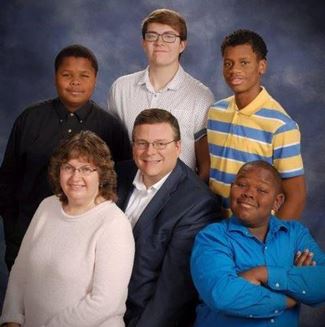Restoring What It Means to be a Family
“Even after having two children of our own, we had always wanted to adopt. We had looked into overseas adoption, and it was expensive. Then we started looking more local, and we learned more about the needs here at home — right in our backyard, so we became foster parents,” says Stacy.
Stacy and her husband Tom have now been foster parents for 20 years. Currently, the Willoughbys are trained through our treatment foster care (TFC) program to provide a safe and caring environment for youth who have experienced significant trauma.
Before becoming a part of the TFC program, Stacy and Tom provided behavioral, respite, traditional and even emergency foster care. But after hearing of the additional support given to TFC families and seeing the importance of getting youth back into a family centered environment first-hand, they signed up for the classes right away.
“I love the TFC program because you have 24/7 support. My social worker is always available with just a text or a phone call. If we need to meet in-person, they are there within 24 hours,” says Stacy. She continues, “I used to work in a behavioral hospital, and there were a lot of children who were there that really needed families, and out of the institutional environment. I found TFC as a way to get children back into families and homes. I feared that these kids would land in prisons or other places we don’t want them to be.”
 Recently, the Willoughbys have adopted three boys from the foster care system, and all three had spent time in residential treatment program prior to finding foster placement with them.
Recently, the Willoughbys have adopted three boys from the foster care system, and all three had spent time in residential treatment program prior to finding foster placement with them.
Initially, things weren’t easy. “One of my boys when he first came to our house had a very violent temperament. He’d throw rocks and try to kick windows. We used to get calls from the school nearly every day,” says Stacy. The Willoughbys were unsure what to do, but through the TFC program, the youth and families receive a weekly visit from their social worker. During this time, they work with the youth and their foster families to determine goals for everyone. Stacy continues, “We worked on goal setting, and our social worker worked with him on a calm down plan for when he got upset. They decided on things he could do for self-soothing when he felt sad or angry.”
Now, Stacy says it’s rare when they get a phone call from the school. “We use a point sheet to track progress. He can see on the point sheet that he was improving. It really helped his self-esteem too. I think he realized that, ‘Hey, I don’t need to act out.’ I think it helped him see that he could be successful.”
The Willoughby family also works hard to make sure their foster and adoptive children have the opportunity to play sports. “We think that sports help with their self-esteem too. When coaches get involved, it’s great. When they see the crowd, and the whole town cheering them on, it helps them thrive. It’s a healing experience for everyone,” says Stacy.
When asked why they still continue to foster after all of these years, Stacy says, “When you see something, you can’t unsee it, and I’ve seen the need for foster families for older teen boys. We see that’s where the need is, and that’s just where our hearts are at.”
Learn More

